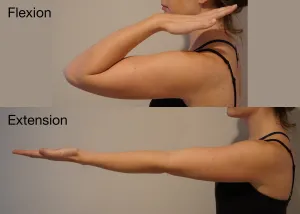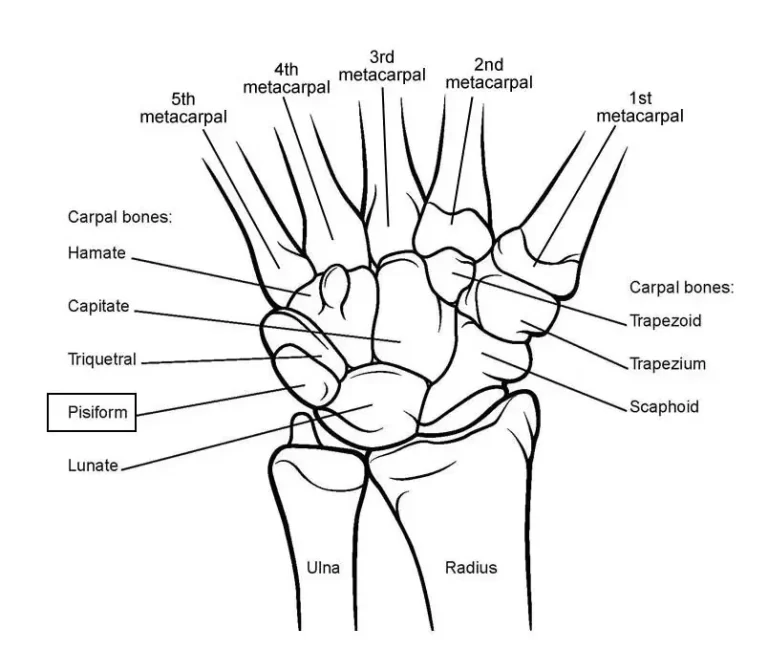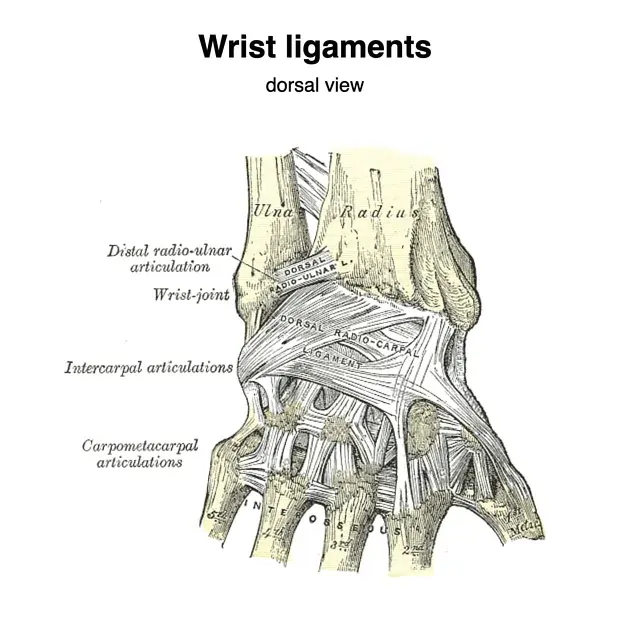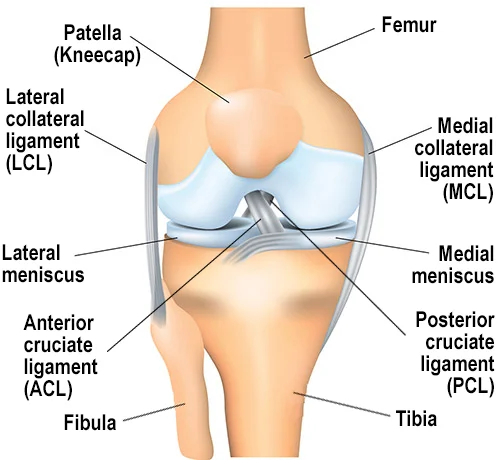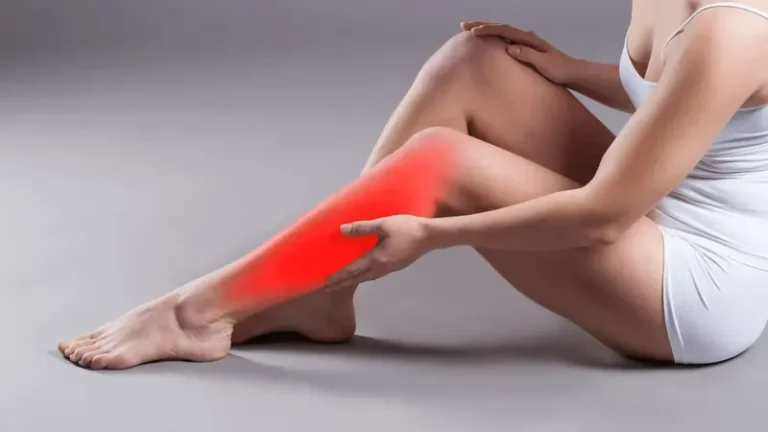Elbow Flexion
Elbow Flexion
Elbow flexion and extension are motions that occur at the elbow joint, which allow the arm to bend and straighten. These movements are necessary for many upper-extremity actions, including reaching, lifting, and throwing.
What is Elbow Flexion?
Elbow flexion is the movement or bending of the elbow joint, which brings the upper arm and forearm closer together. It is one of the most important movements of the elbow joint and is required for a variety of daily tasks and workouts
The angle at the elbow joint between the forearm and upper arm (humerus) is decreased as the elbow is bent. The muscles in the front of the upper arm, notably the biceps brachii and brachialis, contract to allow for this movement. The force needed to bend the elbow is produced by these muscles working together. Many daily activities include elbow flexion, including lifting objects, putting food in the mouth, and doing tasks that require the arm to bend at the elbow. This is also a key movement for biceps-focused workouts like bicep curls and chin-ups.
In the elbow joint, the three bones are the ulna (inner forearm), radius (outer arm), and humerus (upper arm). The biceps and brachialis muscles primarily control elbow flexion.
Two brachial muscle heads are attached to the front of the upper arm’s lower portion. It originates in the scapula and enters the radius. The shoulder girdle muscle comes from the front of the humerus and is located on the ulna bone, beneath the biceps muscle. During elbow flexion, these muscles contract collectively to produce the force required to bend the elbow.
Elbow flexion happens in various actions, including lifting things, performing bicep curls, throwing a ball, and bringing food to the mouth while eating. It is also a useful strength training exercise that works the biceps and upper arm muscles. To strengthen and improve elbow flexion, execute exercises like bicep curls, hammer curls, and preachers using dumbbells, or resistance bands. To avoid injury and enhance muscle growth, use the appropriate form and gradually increase weight or resistance.
To recap, elbow flexion is the bending of the elbow that brings the forearm closer to the upper arm. This is performed by contracting the upper arm’s front muscle groups.
Elbow Flexor Muscles
Elbow flexors are the front arm muscles that control elbow flexion, or bending of the elbow joint. These muscles combine to contract and provide the force required for this movement. The main elbow flexors are as follows:
Biceps Brachii: The biceps brachii muscle has two heads and both are attached to the upper arm humerus bone. It contains two heads, one long and one short, that originate from the scapula (shoulder blade) and connects to form a single tendon that attaches to the radius of the forearm. The biceps brachii is the major muscle responsible for elbow flexion and forearm supination (palm up).
Brachialis: The muscle in the upper arm behind the biceps is called the brachialis. It extends from the lower humerus’s anterolateral surface to the forearm’s upper end of the ulna. The brachialis is a powerful elbow flexor that becomes more active when the elbow is bent against resistance when the forearm is pronated (palm downward).
Brachioradialis: The brachioradialis muscle is situated in the forearm’s lateral area. It extends from the humerus’s lower end to the wrist joint in the forearm. Although the brachioradialis is not as powerful as the biceps or brachialis in elbow flexion, it does contribute to the movement, particularly when the forearm is in a neutral posture (between pronation and supination).
These muscles work together to produce elbow flexion and are commonly trained and strengthened with physical activity like bicep curls, hammer curls, and chin-ups. Other upper arm and forearm muscles play supplementary roles in elbow flexion, but the ones listed above are the primary contributors to this action.
Range Of Motion For Elbow Flexion
The natural range of elbow flexion varies by individual, but it is normally between 0 and 150 degrees.
Here is a breakdown of the estimated elbow curves at various moments in the movement:
Full extension: When the elbow is fully extended or straightened, it has 0 degrees of flexion.
90-degree flexion: When the forearm is perpendicular to the upper arm, it is flexed 90 degrees.
Maximum flexion: Maximum flexion occurs when the forearm approaches or reaches the biceps or humerus, which is usually between 130 and 150 degrees.
It is crucial to remember that the range of motion might vary depending on individual characteristics, age, prior injuries, and other factors. Conditions like arthritis, joint stiffness, and muscle imbalances can all contribute to a limited range of elbow flexion. In some circumstances, physical therapy or rehabilitation may be necessary to improve or restore the elbow’s range of motion.
If you have concerns about your elbow’s range of motion or are experiencing limits or discomfort, you should seek the opinion of a medical expert or qualified physical therapist, who can perform a thorough assessment and provide the best therapies.
Special Test For Elbow Flexion
The elbow flexion test is a clinical examination that is used to determine a range of motion and identify elbow flexion restrictions. Health professionals, such as doctors or physical therapists, generally use this to evaluate elbow flexibility and range of motion.
The elbow flexion test is normally carried out as follows:
Position: The subject should sit or lie down comfortably, with the arm being tested resting on a level surface like an examining table.
Starting position: The elbow is initially fully stretched or straight.
How to complete the test: The examiner gently and passively bends the person’s elbow joint, gradually bending it to evaluate mobility. Their goal is to bring the forearm as close to the upper arm as feasible by measuring the degrees of flexion attained.
Measurement: A goniometer, a specialized tool for measuring joint angles, can be used to properly determine the angle of elbow flexion. The goniometer is aligned with the lateral epicondyle of the humerus (the bony projection on the outside of the elbow), while the stationary and moveable arms are aligned with the ulna bone of the forearm.
Evaluation: The examiner records the amount of flexion accomplished and compares it to the usual range of motion. The average range of elbow flexion has been calculated to be between 0 and 150 degrees. This assessment may reveal any limits in the range of movement.
The elbow flexion test assists healthcare workers in identifying elbow contractures, which are abnormal restrictions on joint movement caused by tightness or shortening of the elbow’s muscles, tendons, or other soft tissues. It is frequently used in conjunction with other clinical examinations to identify and arrange appropriate treatment for disorders such as elbow arthritis, elbow injuries, and post-operative rehabilitation.
The elbow flexion test must be performed by a skilled healthcare expert who understands how to accurately evaluate the data and make suitable suggestions based on them.
Elbow Flexion Stretching
Wall Stretch: With your palm open and your fingers facing away from your body, place your hand on the wall at shoulder height, keep your elbow straight, and spin away The front of your arm or elbow should feel stretched when you stand away from the wall. Hold each movement for 15–60 seconds and repeat 2–4 times.
Physioball Stretch: Lie on a physioball, arms out to the side. You can increase the stretch in your forearms and biceps by extending your wrists and straightening your elbows. After holding each stretch for 15 to 60 seconds, do it two to four times.
Benefits Of Elbow Flexion
Elbow flexion is the movement in which your forearm bends toward your body at the elbow. It has numerous benefits, including:
Positioning: Elbow flexion allows you to position your hand for daily tasks including reaching, lifting, and gripping.
Strengthening: Elbow flexion exercises can help to strengthen and stretch your elbow muscles, which is especially useful for grasping and lifting activities.
Relieving pain: Elbow range of motion exercises can alleviate elbow pain by lowering inflammation and increasing joint mobility.
Injury prevention: Elbow range of motion exercises can help avoid overuse problems like tennis elbow and golfer’s elbow by strengthening the surrounding muscles and keeping the joint intact.
joint health: Elbow range of motion exercises can help you maintain normal joint function by enhancing circulation, lubrication, and nutrient delivery.
Exercises For Elbow Flexion
Several exercises can be used to target and strengthen the muscles involved in elbow flexion. Here are a few of the more basic exercises:
Isometric Elbow Flexion
Place your hands palms up under the table and sit up straight. As though you were trying to raise the table, raise your hands straight up. Hold this position for six seconds. Repeat the exercise ten times. Apply as much pressure as possible without creating pain. This exercise develops the biceps muscles in the front of your upper arm, as well as the muscles surrounding the radius and ulna bones in your forearm.
Strengthening Exercise For Elbow Flexion
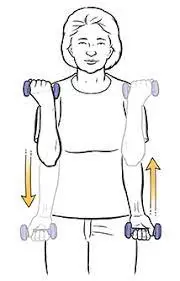
Bicep curls:
Bicep curls are a basic exercise that focuses on the upper arm’s biceps, but also the upper arm to some extent. Here’s how to perform bicep curls:
Standing or sitting, each individual holds a dumbbell in front of them. Slowly breathe out then lift the weights with your elbows at your sides. Tighten your arm and bicep muscles at the top of the exercise before progressively dropping the weights. Repeat as much as you like.
Hammer Curls:
Hammer curls work both the biceps and brachialis. Here’s how you do hammer curls:
Stand or sit with one dumbbell in each hand, palms facing toward the body. (neutral grip). When lifting weights, keep your elbows close against your sides and breathe out. Before progressively lowering the weights, strengthen the muscles in your arms and biceps. Repeat as frequently as you like.
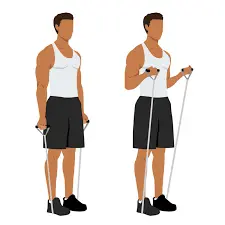
Resistance Band Bicep Curl
Wrap the band around both feet, then grab each end with palms facing forward. Keep your elbows by your side. To bring your hands to your shoulders, bend your elbows while maintaining a straight wrist position. Slowly return to the beginning point. Maintain your back straight. Avoid slouching or leaning forward. Perform three sets of ten repetitions as far as you can comfortably go without pain.
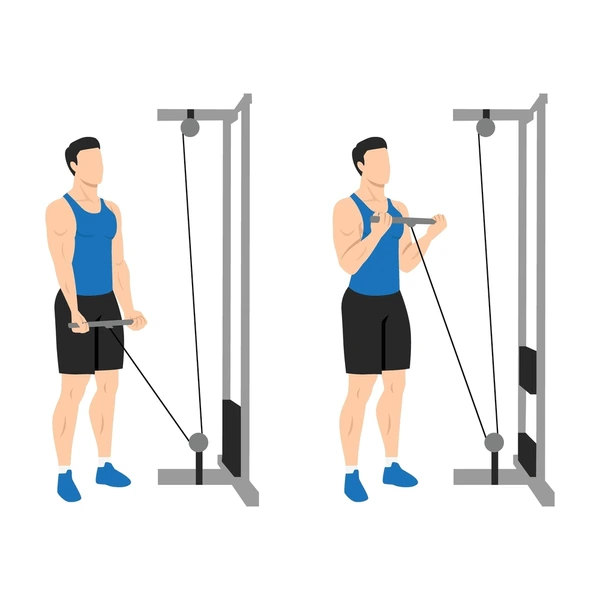
Elbow Flexion With Cable Machine
Make sure the pulley is at its lowest point and has a handle attached. Position yourself facing the cable machine and bend down so you can hold the handle in one hand. Maintain a straight back and outstretched arms to help support your weight. Maintain a proper posture and tuck your elbow into your side before curling the handle upward. Return the weight to its initial position after pausing for a few seconds.
Manual Muscle Testing: Elbow Flexion
The muscles that are used:
- Biceps Brachii
- Brachialis
- Brachioradialis
Actions:
- Biceps: supination
- Brachialis: pronation
- Brachioradialis: mid-position
Innervation: musculocutaneous nerve
Signs of weakness: If the patient is unable to bend his or her elbow, the bicep brachii muscle is weakened. Because it will substantially impact their daily lives, this will most likely be their primary concern.
Patient’s position
The position can change slightly based on the test grade:
grades 0–1: the patient should be in the supine posture, which eliminates gravity.
grades 2 to 5: The patient should be sitting or lying down with their arm comfortably extended
Grade 5: With the palm pointing up, the patient’s arm is fully extended.
Grade 4: The patient’s palm is facing up and their arm is flexed to a 90-degree angle.
Grade 3: The patient is holding their arm palm up and flexed to a 45-degree angle.
Grade 2: With the palm pointing down, the patient’s arm is flexed to a 45-degree angle.
Grade 1: patients can be in any comfortable position, but they should be in a supine position with the therapist supporting their arms.
Therapist Position
The grade being assessed determines the therapist’s position when performing manual elbow flexion muscle testing. With their hands positioned to offer resistance at the right point of the patient’s range of motion, the therapist typically stands or sits facing the patient.
For Example
- Grade 5: With their hands just above the patient’s wrist, the therapist offers resistance near the end of the patient’s entire range of motion.
- Grade 4: With their hands slightly above the patient’s wrist, the therapist applies resistance halfway through the patient’s range of motion.
- Grade 3: Using their hands slightly above the patient’s elbow, the therapist applies resistance at the start of the patient’s range of motion.
- Grade 2: The therapist places their hands just above the patient’s elbow and supports the patient’s arm to offer resistance at the start of the patient’s range of motion.
- Grade 1: With the patient’s arm supported and the therapist’s hands placed slightly above the elbow, the therapist offers little resistance at the start of the patient’s range of motion.
Depending on the assessment procedure being used, the precise role and guidelines for every grade may differ slightly. To guarantee accurate and trustworthy findings, it is crucial to adhere to a standardized process.
What is the test procedure?
Inform the patient about the process.
Ask the patient to comfortably sit or lie down with their palm facing up and their arm completely extended.
As the patient tries to flex their elbow, apply pressure to their wrist.
Using the following scale, rate the patient’s elbow flexor strength:
- Grade 5 (Normal): The patient can flex their elbow with complete resistance.
- Grade 4 (Good): The patient can bend their elbow with little resistance.
- Grade 3 (Fair): The patient is only able to bend their elbow against gravity, not force.
- Grade 2 (Poor): The patient can bend their elbows, but they are unable to do so against gravity.
- Grade 1 (Trace): The patient may palpably contract the muscle, but they are unable to initiate elbow flexion.
For comparison, do the test again on the other arm.
FAQs
What is elbow flexion movement?
Elbow flexion is the movement of your forearm toward your body by bending at the elbow.
What causes a lack of elbow flexion?
Burns, illnesses, extended immobility, repetitive actions, and other injuries are some of the causes.
What nerve causes weakness in elbow flexion?
An examination for neurological impairment called the elbow flexion test is performed to diagnose cubital tunnel syndrome (ulnar nerve).
Why can’t I bend my elbow?
Problems with the elbow joint itself, as well as with the muscles, joint covering, or ligaments, can cause stiffness. Scar tissue can develop from soft tissue in certain circumstances, such as following an injury or surgery. Elbow stiffness may result from this. The elbow may occasionally lock into a fixed posture.
What is a normal amount of elbow flexion?
These are the standard values for elbow AROM movements: Flexion from 140° to 150°.
References
- Inverarity, L., DO. (2024, January 4). Isometric Elbow-Strengthening Exercises. Verywell Health. https://www.verywellhealth.com/elbow-exercises-2696591
- Thera-Band Elbow Flexion (Bilateral) in Standing – Performance Health Academy. (n.d.). https://www.performancehealthacademy.com/thera-band-elbow-flexion-bilateral-in-standing.html
- Patel, D. (2023c, June 29). Elbow Flexion and Extention Movement, ROM, Exercise, Muscle. Samarpan Physiotherapy Clinic. https://samarpanphysioclinic.com/elbow-flexion-and-extention/

